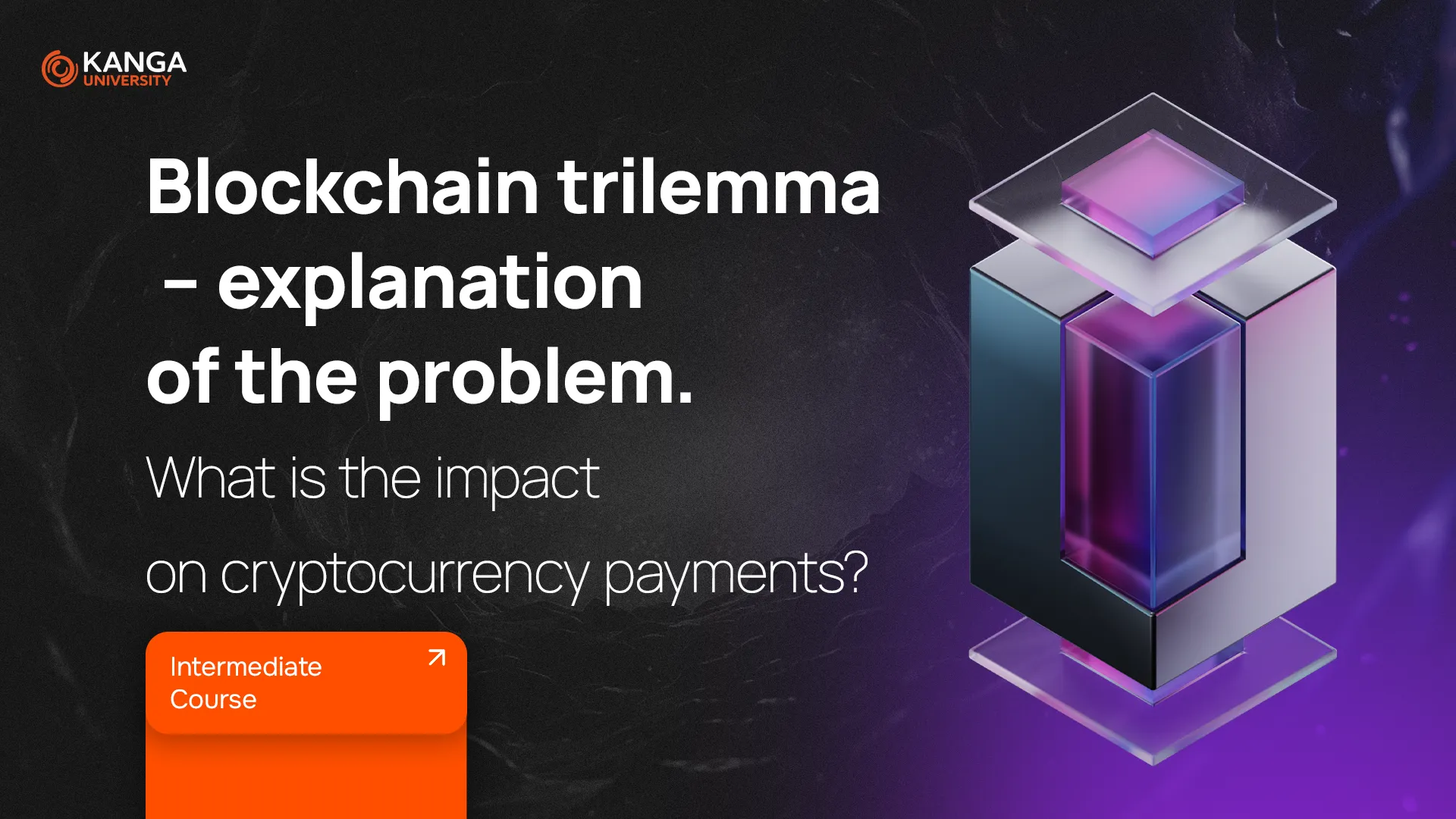
Blockchain technology promises fast, secure, and independent financial transactions. However, in reality, blockchains face one of the biggest technological challenges—the blockchain trilemma. This refers to the difficulty of achieving security, scalability, and decentralization simultaneously.
In this lesson, you’ll learn what the blockchain trilemma is, how it affects cryptocurrency payments, and what solutions can improve transaction efficiency.
What Is the Blockchain Trilemma?
The term “blockchain trilemma” was introduced by Vitalik Buterin, co-founder of Ethereum. It describes the challenge developers face when trying to ensure that a blockchain is:
- Secure – resistant to attacks and manipulation.
- Scalable – capable of handling a large number of transactions.
- Decentralized – not controlled by a single entity.
The biggest issue? Blockchains can optimize two of these aspects but at the cost of the third.
Example: Bitcoin
Bitcoin is the most secure and most decentralized network in the world. Hundreds of thousands of nodes ensure its security, and the network’s computing power exceeds 460 exahashes per second.
However, there’s a downside: Bitcoin is not scalable. It processes only around 7 transactions per second (TPS), which is extremely low compared to traditional payment systems like Visa (which handles tens of thousands of TPS).
For cryptocurrency payments, this is a significant issue. Low scalability means slower and more expensive transactions, especially during periods of high market activity.
How Does the Blockchain Trilemma Affect Cryptocurrency Payments?
-
High Transaction Fees
- When the network is congested, fees increase. In 2021, the cost of a single Bitcoin transaction exceeded $60.
- For everyday payments, this is a major obstacle.
-
Slow Transaction Processing
- With low throughput (like Bitcoin), users may wait several minutes for transaction confirmations.
- Compared to instant card payments, cryptocurrencies seem inefficient.
-
Scalability Issues in Smart Contracts
- Networks like Ethereum enable decentralized financial applications (DeFi), but high network usage results in expensive fees, limiting accessibility.
How Can the Blockchain Trilemma Be Solved in Cryptocurrency Payments?
Layer 1 Solutions (Modifications to the Blockchain Itself)
-
Changing the Consensus Mechanism
- Switching from Proof-of-Work (PoW) to Proof-of-Stake (PoS) improves efficiency.
- Example: Ethereum transitioned to PoS with The Merge upgrade.
-
Sharding (Splitting the Blockchain into Smaller Parts)
- By dividing the network into smaller segments, each part can process transactions independently, improving throughput.
- Ethereum plans to implement sharding in future updates.
Layer 2 Solutions (External Scalability Enhancements)
-
Lightning Network (for Bitcoin)
- A technology that enables instant and low-cost BTC transactions, operating off-chain.
- Fees are nearly zero, and payments are immediate.
-
Sidechains (Parallel Blockchains)
- These are independent blockchains that operate alongside the main network but process transactions faster.
- Examples: Polygon (for Ethereum), Liquid Network (for Bitcoin).
-
Stablecoins on Scalable Blockchains
- Tether (USDT) and USDC are issued on faster blockchains like Solana, Algorand, and BNB Chain, enabling quick and cheap transactions.
Summary
The blockchain trilemma has a huge impact on cryptocurrency payments. Without proper solutions, users face:
–High fees,
–Slow transaction processing,
–Limited accessibility for everyday users.
With the development of Layer 1 and Layer 2 solutions, cryptocurrency payments are becoming faster and cheaper. In the future, blockchain networks will be more efficient, potentially leading to global adoption of cryptocurrencies for everyday transactions.